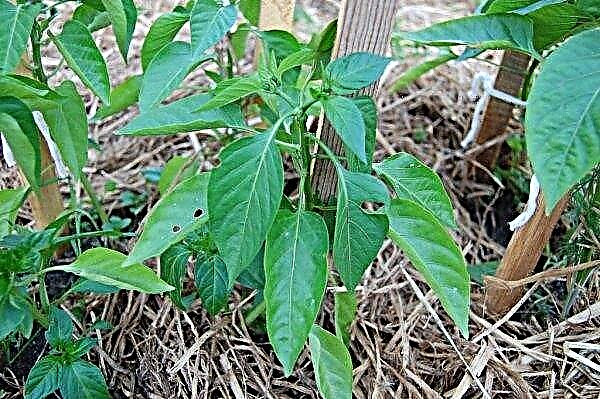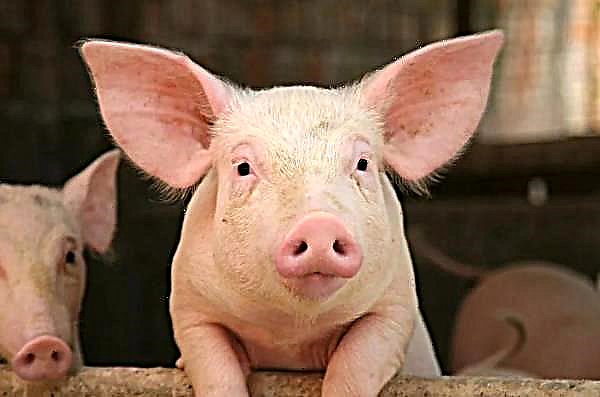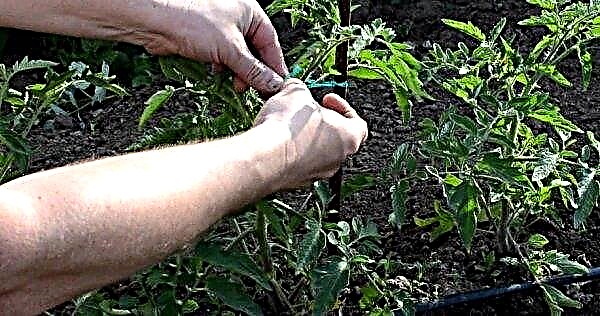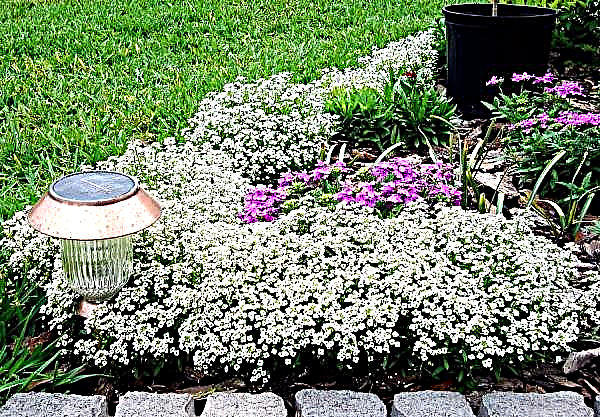The presence of a slope in the garden is always a problem for the homeowner, but, on the other hand, the surface of the earth is rarely absolutely flat. The height difference, of course, creates additional difficulties in the process of arranging a kitchen garden, a garden or a house adjoining territory, although modern technologies used in landscape design make it possible to find very interesting solutions and create an original layout with maximum use of the source data. About how to properly position objects on a multi-level site, which way to strengthen the slope it makes sense to choose, as well as many other secrets of landscaping and landscaping uneven terrain - below in all details.
Features of an uneven area with a vertical drop
Some irregularities are present on almost any land, so for a start it is worth determining the terminology. According to generally accepted building codes, a height difference of 3% (e.g. 3 m within 100 m of an area) is not considered a slope. Within the limits of such an error, it is not necessary to build terraces, strengthen the slopes and trouble yourself by creating a multi-level project.
However, exceeding the specified difference in certain cases may allow not to take into account the slope if there are no plans to erect capital structures on the site or to get a rich harvest of fruits and vegetables that are sensitive to the quality of care. The specific slope steepness is also of great importance for planning an uneven plot, its direction relative to the cardinal points.
Important! The slope in landscape design is the ratio of the difference in height between two points on the surface of the earth and the distance between them projected onto a horizontal line. This value is expressed as a percentage.
Depending on the first parameter, it is customary to distinguish three degrees of unevenness:
- insignificant - 3–8%;
- average - 8–20%;
- significant (steep slope) - more than 20%.
The most successful option is a slight slope from north to south or, the second option is the same small difference in height from the center in different directions.
For the arrangement of the site with the presence of a slope, the following additional measures are mandatory:
- leveling the terrain by physically removing the upper layer of soil from the highest point and adding the earth to the lowest (sometimes it is not possible to manage with the usual transfer and the fertile land has to be bought up, and the poor and clay ones must be removed or used for construction work);
- zoning and terracing;
- strengthening slopes, including by erecting retaining walls;
- the obligatory presence of a complex drainage system, the competent organization of storm drains designed to preserve the fertile soil layer and prevent its leaching;
- planning of paths, steps and ramps;
- strict observance of the rules when placing objects, primarily capital structures and perennials;
- a more thorough approach to the selection of crops.
Video: Layout of a complex terrain
Rules for the design of landscape design on the site with a slope
For an uneven plot, the Alpine landscape design, specially designed for mountainous terrain, is the best suited. The main feature of this direction is the widespread use of boulders and large stones (both artificial and natural), as well as planting the maximum number of plants of all sizes and colors.
- With the help of such a simple tool several tasks are solved at once:
- the slope strengthens;
- snow is retained, which contributes to the natural hydration of the soil in spring, when active sap flow and a set of green mass should be provided with a large amount of water in the soil;
- the plot takes on a spectacular and sophisticated look.

When creating terraces and separate areas, it is necessary to take into account their purpose, as well as the direction of the slope relative to the cardinal points. The general principle is as follows: the width of the terrace can be from 0.8 to 6 m, the height from 0.7 to 2 m. For beds with low vegetation, it is better to make narrower terraces with small differences, it is easier to strengthen them.
Important! Sloping plots are usually cheaper than flat plots, but the cost of upgrading such an acquisition can far exceed the savings.
But to accommodate the gazebo, recreational area, summer kitchen or apartment building, of course, you need a larger area. As for the direction of the slope, it is important for assessing the degree of illumination of the zone, for example, on the eastern slope it is better to plant those crops that need protection from bright sunlight, on the southern, on the contrary, the most light-loving and drought-resistant plants. The northern slope is suitable for decorating a shady composition of tall trees, under which you can place a bench or a playground for games.
The northern slope is suitable for decorating a shady composition of tall trees, under which you can place a bench or a playground for games.
In addition, when arranging an uneven land, it is important to adhere to such rules:
- Stones can be laid with an ordinary bulk or using a binder solution. The first option is cheaper, but less reliable, so when using it, all the voids should be densely covered with a mixture of earth and lawn grass seeds to further strengthen the structure.
- The tree is not very suitable for arranging uneven areas, since such material does not withstand loads and also requires constant care, and with a difficult topography it is much more difficult to provide.
- The supporting material for strengthening the terraces is selected taking into account the height difference: the concrete wall can withstand the support to a height of 3 m, while when using brick this limit is reduced to 0.7 m.
- Brick is also very popular. Clinker masonry may be discharged or deaf. The material allows you to build walls of any configurations, twisting and zigzag shapes.
Video: Layout of the hillside
Where to start landscaping a site with uneven terrain
It is necessary to begin to improve the uneven land with the development of a very detailed and detailed project. Moreover, if planning at an ordinary summer cottage is a desirable, but not a prerequisite for designing a territory, then a significant difference in height is a feature that almost completely excludes the possibility of making subsequent adjustments to an initially poorly thought out scheme.
Everything has its own nuances: the location of the house, the presence or absence of a cellar, the size and location of terraces or individual zones, the arrangement of walkways and approaches, the strengthening of slopes, drainage, irrigation systems, and the types of plants to be planted.
Did you know? The Japanese resort of Tomamu, located on the island of Hokkaido, is known throughout the world not only for its excellent ski slopes and impeccable service, but also for its unique Unkai terrace, which literally means “sea of clouds”. The site is located in the mountains, at an altitude of 1088 m above sea level, as a result, tourists see a picturesque swirling cloudy carpet not above their heads, but far below them.
Where to build a house
The technology of building a house in a territory with a slope is a whole science in which it is important to take into account many factors, first of all, the angle of inclination and its direction.
Given the above classification of the degree of roughness of the plots, experts give the following important tips:
- With a small slope, it is allowed to build a building without a cellar or basement with leveling the terrain due to the usual filling of the soil.
- The average slope assumes the presence of a base, but you can do without additional work to level the site. The underground part of the building, which can be used as a cellar or garage, in this case is designed to conceal the roughness of the landscape, for this part of the hill is cut out during its construction.
- The steep slope is the most difficult site for construction. Here it is necessary to order a special project from specialists, otherwise the design may turn out to be fragile and unreliable. On the other hand, professionals are able to turn a disadvantage into an advantage by suggesting the idea of an economical home in which an existing slope will be used, for example, as a wall. In addition, on steep slopes it is possible to arrange a two-level or multi-level house, divided into separate sections or blocks, in each of which it is very convenient to enter a separate entrance. For the summer cottage option, it will be very useful if you can enter the summer kitchen bypassing the common corridor leading to the dwelling - this will help keep the house clean and save the hostess from unnecessary cleaning.

The correct location of the structure also depends on the direction of the slope. It is important to know these rules:
| Grade Direction | Possibility of use for construction |
| South side | The most successful option. Allows you to keep warm in the winter and cool in the summer. If there is such a slope, it is recommended to build the house closer to the east side. |
| Southeast and east sides | Also considered favorable for construction. Allow you to save all the advantages of the south side - good lighting, protection from the cold north wind, fast snow melting, high energy saving. |
| North side | Suitable for building a house except in regions with a hot climate. If the site has exactly this type of slope, you should try to move the residential buildings on it as close as possible to the western border. |
| West side | It is also considered as an unfavorable option, especially for a summer residence, because here in the summer it will always be very hot in the afternoon, and in winter it will not be possible to take advantage of such a desired advantage. If there is a site with a similar relief, the house should be located closer to the northern border, at the top of the site, and household structures should be moved to the lower tiers. |
One of the most serious mistakes is considered to be the choice for building a house on the lower level of an uneven plot. It would seem that in this case the structure is protected from the wind and as stable as possible, but in reality this is not so. From the school course of physics, everyone knows that cold air tends to go down and hot air to rise.
Faced with an obstacle in the form of a wall, cool air masses accumulate around it, thus, the house located below is imprisoned in a kind of “cold pocket”, which is especially felt at night. The temperature difference between such a "pocket" and the warm air in the neighborhood (and it can reach 9 ° C) creates condensation, and increased humidity is the development of the fungus and slow destruction.
Did you know? An architect from Shanghai named Amei Kandalgaonkar became famous for creating a conceptual house located inside a giant stone in the middle of the Arabian desert. So the creator expressed his admiration for the ancient burial sites of Madain Salih carved into the rocks nearby.
To prevent this from happening, the house needs to be equipped with very serious thermal insulation, that is, bear additional costs, which are easy to avoid if you initially place the building at the top.
And a few more important tips for building a house:
- on an uneven site, it is better to place the building not in the center, but near the border, in this case it is easier to plan the arrival of vehicles into the territory;
- objects such as a cesspool, an outdoor shower or toilet, compost, a stable for animals should be in the lower tiers;
- it is optimal that the distance between residential and non-residential premises is at least 6 m.

Paths and steps
Walkways, steps and ramps - an integral part of the site with a slope. The task of these buildings is not only to decorate the territory, but also to provide a really convenient and comfortable passage between tiers, which often serves to move owners with heavy and bulky cargo - buckets, garden tools, stepladders, etc.
To perform this function, it is important to try to adhere to such initial rules:
- if possible, all tracks should have the same width;
- when planning walkways, you should strive to make them as gentle as possible, steep climbs are best avoided, so the best option in this case is the principle of “serpentine” - almost horizontal paths located in zigzags;
- to climb a steep terrace, it is better to provide a ladder instead of a path, while its steps should be wider and lower than is permissible in a residential building, so the likelihood of falls and injuries when using them with a load in your hands is reduced;
- railings during the construction of stairs are desirable if the slope exceeds 45 °, but even in this case it is more preferable to provide shallow platforms between several wide steps;
- more than 10 steps within one lift should not be planned, such a design loses stability and needs at least additional concreting;
- next to the stairs it makes sense to provide gentle ramps that will help to raise the car, trolley, lawn mower and other garden tools on wheels to the lower terrace and lower them down.

Ways to strengthen the site
There are several ways to strengthen the slope and prevent soil slipping. The optimal choice depends on the layout of the site, the use of terracing or zoning, the type of soil and, above all, on the steepness of the rise.
Conventionally, all these methods can be divided into two categories - biological and technical. In the first case, the root system of plants specially planted for this purpose on a slope is used as a fixer; in the second, objects of inanimate nature (various building materials and objects at hand).
Creeping ground cover grasses, as well as perennial ones, including trees and shrubs, can be the only protection against landslides if the slope does not exceed 30 ° and the total height difference is 30 cm. When choosing the type and variety of plants, it is important to pay attention to type of its root system - it should be superficial and occupy the greatest possible horizontal space.
A good option, for example, are:
- herbs: periwinkle, sweet peas, tenacious creeping, rocky ferns, tobacco, St. John's wort, nasturtiums, garden saxifrage;
- shrubs and trees: girl's grapes, ivy, wild rose (wild rose), lilac, willow, barberry, Japanese quince, etc.

Significant changes in height can also be strengthened by planting, but in this case, this method is combined using more reliable designs, and the seeds are sown between the segments of the reinforcement made of stones, tiles, geomaterial, logs, gabions, pergons, improvised material and etc.
DIY reinforcement and clearance
You can strengthen the slope with your own hands, without involving heavy equipment and hired labor. All that is needed is attentiveness, clarity and sequence of actions, a scientific approach, the presence of assistants, physical health and good mood.
Training
At the preparation stage, it is important to clearly build the entire action plan, guided by the following rules:
- If grass or other plants are already growing on the slope, it is always worth considering the possibility of preserving them without deleting, since the branched root system formed over many years is a ready-made and very reliable protection that makes sense to use.
- Start work on strengthening the slopes should always be from the top point, gradually moving down.
- The more terraces created on the site, the smaller the elevation difference will need to be strengthened, and, therefore, the less reliable the retaining structure can be.
- The boundaries of zones with a maximum height difference are very convenient to limit by planting trees. A powerful root system in this case will become the most reliable protection against soil slipping, however, it must be borne in mind that it will take several years to form, and all this time the fertile soil layer should be periodically sprinkled under the slope.
- The above methods of strengthening can be combined, this trick will significantly save both strength and money.
- When determining the type and method of protection, it is necessary to take into account the ability of the future support structure to withstand two differently directed forces - tipping and shear. The greatest danger here is water washing the support from below, as well as the weight of the soil held by the vertical axis, while the heavier the soil, the more reliable the strengthening should be.
Drainage systems
Simultaneously with the strengthening of the slope, it is necessary to provide for drainage - each supporting structure must be equipped with it. It is the drainage that is designed to protect the props from being washed out by removing excess water - rain, irrigation and melt.
Important! The greater the difference in height, the greater the risk of scouring. Even a small stream can wash out a deep hole in a steep slope in a short time.
Drainage systems are equipped at the last stage of strengthening work. By this moment, the exact location of the house and all other buildings should already be known, since only in this case can the drainage direction be correctly planned - to the center of the plot, diagonally, around the perimeter, etc.
 For drainage, special perforated pipes are usually used, and this eliminates the connection of a pump to them. It is assumed that the water will move down by gravity, so when planning the system it is very important to provide a sufficient level of slope.
For drainage, special perforated pipes are usually used, and this eliminates the connection of a pump to them. It is assumed that the water will move down by gravity, so when planning the system it is very important to provide a sufficient level of slope.
The minimum permissible steepness, as practice shows, is 2 cm per 1 linear meter, but sometimes this angle may not be enough, therefore, for the correct calculation, it is better to invite a specialist who will conduct a full hydrogeological survey of the site, assess the type of soil, determine the depth of groundwater and others important parameters, after which it will give qualified recommendations.
On the outside, the drainage is protected with coconut fiber or geotextile.In order to protect the pipe from soaking, the heavier the soil, the thicker such insulation should be, on average, lay a layer of 10–20 cm. There are two ways to lay the drainage system - open (surface) and closed (deep). Each of them has its own characteristics, advantages and disadvantages.
Open
The most primitive option of open drainage is a trench excavated along the fortification wall with a given slope to the drain - the receiving collector or the well-catchment. The best form of laying such a system is the central ditch, located in the lower tier of the site, into which, like tributaries into a large river, water will flow from auxiliary trenches, converging at an acute angle and slightly above in the shape of a “herringbone”.
 The depth of the trench should be at least 30 cm.
The depth of the trench should be at least 30 cm.
Closed
The main disadvantage of the closed drainage system before the surface is the difficulty in the implementation of such a project. But at the same time, a number of great advantages are achieved - saving free space, reliability, efficiency and durability due to additional protection from above. Directly above such a drainage system, a track or even passage can be placed, while an open ditch eliminates this possibility.
Did you know? With rain and snow, about 520,000 cubic kilometers of water fall to the earth, which makes it possible to cover the planet with an even layer about a meter thick. If you translate this incomprehensible number into liters, you need to add 12 zeros to it.
As the name implies, the deep drainage system is located underground. Its construction begins with the manufacture of a conventional trench, but its depth should be much greater, up to 1 m, since in cross section, the finished structure will look like a layer cake, in which:
- the bottom layer is sand, not less than 10 cm;
- followed by geotextiles or coconut fiber, laid in such a way as to cover the bottom and walls of the trench with a small margin;
- a special polymer pipe is laid over the protective layer;
- the upper part of the structure - sequentially a layer of rubble, geotextile, sand and garden earth.

Retaining walls and gabions
Retaining structures can be made of a huge number of different materials and have all kinds of mounting options.
In particular, the most common types of protection are:
- walls and fencesmade of boards, logs, brick, concrete, natural stone;

- geomaterial reinforcements (geogrid, geogrid, geomats or geotextiles), which is laid out on a slope and covered with a layer of soil from above, and then suitable plants are planted on a slope with a dense carpet - as a result, the impression of a virgin terrain is created, but the slope remains firmly fixed;
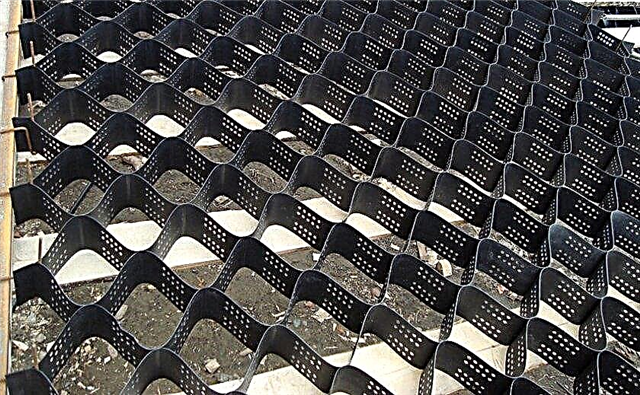
- gabions and pergons - modular constructions from a lattice base filled with stones, rubble or rubble. Such protection looks very impressive, is not expensive, and at the same time it is very reliable and durable;

- improvised materialfor example, old car tires, cobblestone, rubble.

Rules for the selection and planting of plants on the site
Plants on an uneven site fulfill a very important function of strengthening slopes, but this does not mean at all that the decorative purpose of green spaces cannot be used to the full. When choosing and placing the types of vegetation, one should be guided by one's own taste and preferences, making allowance for only certain features dictated by the specifics of the relief.
They can be stated as a fairly short set of rules:
- A minimum of space free from vegetation should remain on an uneven area - literally every piece of land should be tried to cover with a green carpet. Even in the aisles of a garden, it is worth sowing lawn grass, green manure, meadow flowers or groundcover.
- The tallest plants are located at the lower points of the site, then, as you move up, the trees are replaced by shrubs, and those, in turn, are replaced by grass and flowers. This trick will ensure uniform illumination for all crops planted on the territory, and, in addition, visually conceal height differences.
- It is better to plant evergreens on the northern slope: lush branches that are not exposed throughout the year, in this case, will ensure the retention of warm air in winter.
- When placing plants on an uneven area, it is important to take into account the relation of a particular culture to light, for example, grapes grow best on the southern, western or southwestern slope.

However, all the mentioned requirements should not be considered as very strict: by experimenting and trusting their intuition, a good gardener can always create a successful and unique composition, even contrary to established canons.
Arrangement and design of the site with the presence of a slope is a difficult task, expensive and, as a rule, requiring additional financial investments, but nevertheless this relief has its advantages.
So, with the skillful use of such a feature of the location of the land allotment, the homeowner opens up huge scope for creativity, and if the general idea turns out to be successful, and the plan is implemented flawlessly, it can be achieved that in a multi-level version of the execution, the cottage or country house will look much more interesting, more effective and more harmonious than in standard design.







